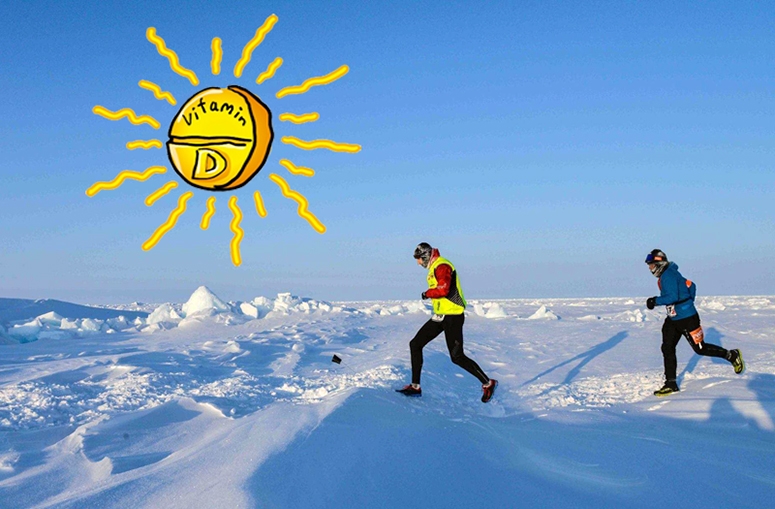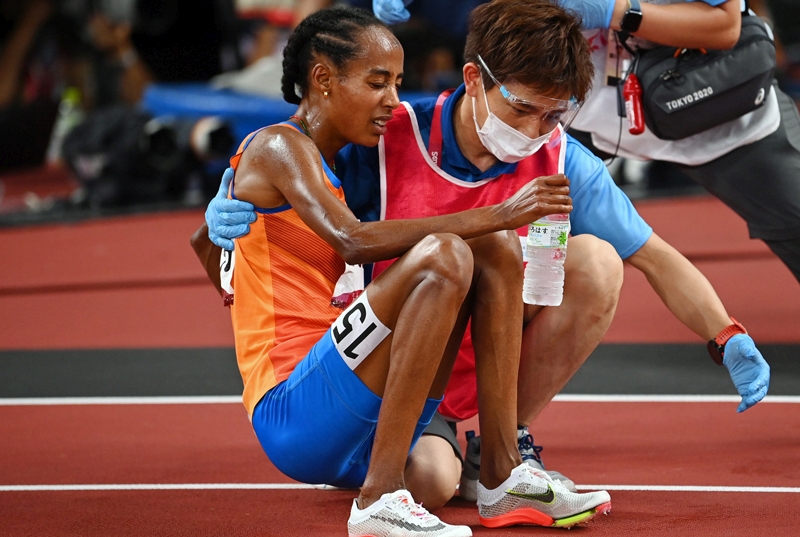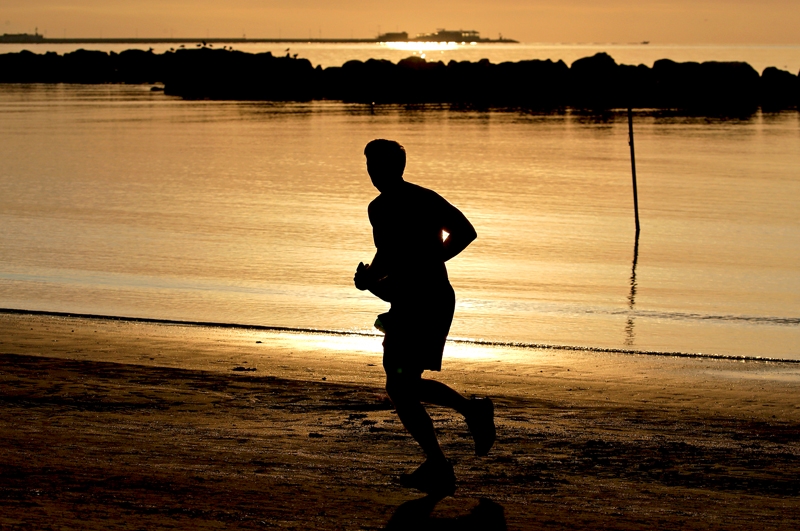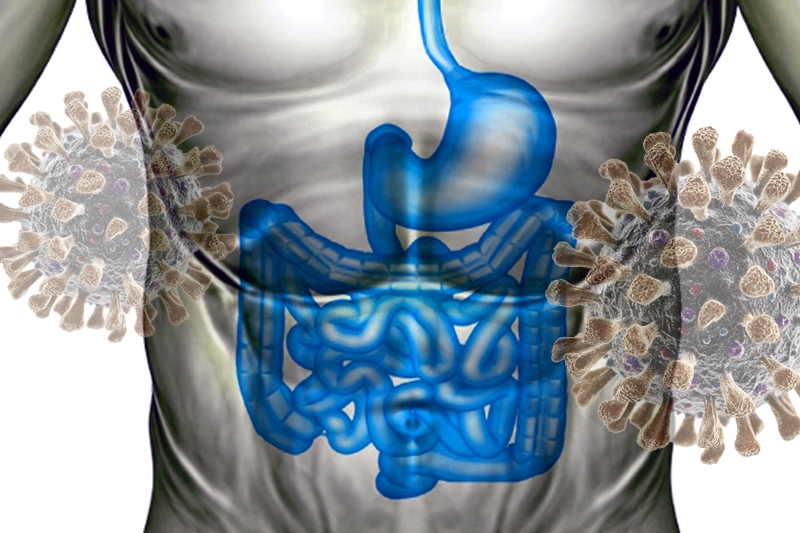You are viewing 1 of your 1 free articles. For unlimited access take a risk-free trial
Vitamin D and muscle function: the new frontier

Vitamin D is a critical nutrient for health and immunity, and also seems to play a key role in muscle function and performance. SPB looks at some recent evidence
In recent years, more research has been carried out into vitamin D than most other nutrients put together. The reason is simple; although the importance of vitamin D for bone strength has long been understood, a growing body of evidence has demonstrated that this vital nutrient plays a key role in maintaining health too. For example, research has established that optimum intakes of vitamin D in adults provide significant protection from age-related degenerative diseases such as heart disease, multiple sclerosis and a number of different cancers(1,2).Vitamin D and immunity
In addition, scientists now understand that vitamin D status is intimately linked to immunity – namely that a sub-optimum vitamin D status harms immunity, whereas an optimum vitamin D intake improves immunity. To illustrate this, consider the findings from a recent large review study, which looked at the relationship between blood levels of vitamin D and the incidence of acute respiratory tract infection(3). This review pooled the data from 14 other studies and found that the lower the level of vitamin D in the blood, the higher the risk of an acute respiratory tract infection, and the more severe it was likely to be – especially when levels of vitamin D in the blood dropped below 37.5ng/L (see later).Importantly, these findings on vitamin D status and immunity have been borne out not just in studies on the general population but in athletes undergoing heavy training loads. Examples of these studies include:
- Endurance athletes (267) training over the winter period, where a significantly higher proportion of those who were vitamin D ‘deficient’ came down with an upper respiratory tract infection (URTI – coughs, colds, sore throats etc) and suffered worse symptoms than those in the ‘optimal’ status group(4).
- A study where supplementing 5000IUs per day with vitamin D₃ for four weeks during the winter boosted immune function and reduced the incidence and severity of URTIs in taekwondo athletes(5).
- Research on older athletes showing that poor vitamin D status is linked to a higher incidence of URTIs, and that increasing vitamin intake, especially over the winter period, reduces the incidence and severity of URTIs(6).
Vitamin D and COVID-19
In the context of the last 20 months and given its effectiveness against other respiratory viruses, it’s also worth noting that vitamin D intake/status and the prognosis for a COVID-19 infection has also come under scrutiny. Over the past 15 months, a number of smaller studies appeared in the literature reporting that patients with a poor vitamin D status fared significantly worse in terms of outcomes. In short, a poor vitamin D status was observed to increase the risk of contracting symptomatic disease, increase the risk of hospitalisation, increase the risk of severe illness and also increase the mortality rate.In a very large review study just published in the International Journal of Molecular Sciences, researchers sought to pool the data and consolidate the research surrounding the role of vitamin D in the treatment and prevention of COVID-19(7). They concluded that: “The consensus is that vitamin D has a host of immune modulating effects, which may be beneficial in the context of COVID-19, and that low levels of vitamin D can result in dysfunction of crucial antimicrobial effects, potentially contributing to poor prognosis.” It is perhaps interesting to note that vitamin D therapy has been used with extraordinary success (along with supplemental zinc, Ivermectin and the antibiotic ‘doxycyline’) in the Indian state of Uttar Pradesh(8), where cases of COVID have been virtually abolished – in sharp contrast to earlier in the year(9).
Figure 1: Vitamin D and COVID 19 outcomes(7)

A sufficient vitamin D status is thought to reduce the severity and mortality risk of COVID-19 (left-hand side of the diagram) by a variety of mechanisms. These include vitamin D’s ability to act as an antioxidant and anti-inflammatory, its ability to raise the level of anti-viral proteins (peptides) and a reduction in cell death and pro-inflammatory cytokines (which when uncontrolled can lead to a ‘cytokine storm’).
Vitamin D and muscle physiology
Given that being forced to take time off training through illness can put a massive dent in even the best planned training program, it’s clear from all of the above that all athletes seeking to ensure maximum performance should ensure their vitamin D status remains optimum, especially during the winter months (see later). However, that’s not the end of the story because it may be that vitamin D plays a direct role in muscle function and recovery.Vitamin D can be thought of as a ‘hormone-like’ nutrient; put simply, vitamin D functions rather like hormones in the body, which are compounds that act as messengers, switching chemical processes on and off, or regulating their speed. In recent years, scientists have discovered that muscle cells and the nuclei within them contain vitamin D receptors, which allow vitamin D to bind and regulate various functions of the muscle cells(10,11). This finding is supported from evidence from animal studies, which show that when muscle injury occurs, or when subjected to stressful physical exercise, the vitamin D receptors in muscle fibers being repaired become extremely active(12).
Vitamin D and performance
Given its role in the maintenance, repair and growth of muscle tissue, it’s natural to ask whether vitamin D exerts a direct and beneficial effect on performance in sportsmen and women undergoing rigorous training? This is the question that researchers have explored in a new review study on vitamin D and muscle function(13). Drawing on the data from a large number of previous studies on vitamin D and muscle function, their findings have been published in a paper titled ‘Muscle Regeneration and Function in Sports: A Focus on Vitamin D’, which appears in the journal Medicina (Kanaus).Although many of the findings relate to the interaction of vitamin D between the physiology, biochemistry and genetics of muscle tissue (and are therefore quite technical), it nevertheless makes for fascinating reading. In particular, the researchers make a number of very relevant points regarding vitamin D and muscle physiology and sports performance. Some of the main points are as follows:
- Even negligible muscle injuries, such as the acute micro-injuries to muscle fibers that occur during resistance training, increase the expression of vitamin D receptors in muscle tissue, suggesting the enhanced sensitivity of injured and healing muscle to vitamin D.
- A vitamin D deficiency appears to adversely affect mitochondrial function by reducing adenosine triphosphate (ATP – the key energy currency molecule in the body) production and increasing oxidative stress, which therefore hinders muscle regeneration.
- Blood levels of vitamin D are inversely correlated with those of lactic acid, creatine kinase (CK) and total antioxidant activity after exercise – all markers of stress, damage and fatigue. In other words lower levels of vitamin D in the body may well increase muscle fatigue for a given exercise intensity, which suggests vitamin D supplementation might reduce it.
- In humans, research shows that vitamin D status significantly affects muscle repair after injury, and that blood levels of vitamin D before exercise are inversely related to post-exercise muscle weakness in healthy adult males (ie the better the vitamin D status, the less post-exercise muscle weakness was experienced).
- Research has found a beneficial effect of vitamin D supplementation on functional muscle recovery in adult males exposed to muscle injury from repetitive eccentric contractions. In one piece of research for example, young trained males with vitamin D deficiency performed exercise that induced muscle injury and were assessed for how quickly they regained muscle strength. This protocol was then repeated after the men had received vitamin D supplements (4000IUs daily for six weeks), whereupon the subjects showed significant improved recovery of peak torque at 2 and 7-days post exercise.
- A poor vitamin D status seems to be linked to the occurrence of sport-related muscle injury. In an investigation into National Football League players comparing those with a good and deficient vitamin D status, a vitamin D deficiency significantly increased the risk of strain in the lower limb or core muscles, but particularly in the hamstring region. Similar findings have been reported in swimmers, where blood levels of vitamin D levels increased the risk of muscle injuries by 77%. In another piece of research, elite ballet dancers who received oral supplementation of vitamin D (2000IUs per day) for four months during winter suffered fewer muscle injuries compared to controls that did not receive vitamin D.
Summary and practical recommendations
Once upon a time, vitamin D was considered essential merely for bone health. Over the past two decades however, scientists have begun to understand that this special nutrient possesses hormone-like qualities and plays an absolutely vital role in maintaining good overall health and maximum immunity. On top of that, research is also beginning to uncover the role of vitamin D in muscle repair, recovery and growth, and by extension, injury prevention. In particular, athletes who undertake high-intensity training sessions would do well to ensure an optimum vitamin D status all year round in order to maximize their muscle resilience and recovery capacity. With that in mind, here are some practical tips for athletes who want to ensure maximum health and performance throughout the coming winter and beyond:- Try to consume plenty of vitamin D-rich foods at all times of the year. These foods include oily fish (such as salmon, trout, herring and sardines), eggs, milk (which is fortified), butter and some margarines. Be aware that many otherwise nutritious foods such as vegetables, fruits, grains, cereals, pulses, nuts and seeds contain very little vitamin D.
- If you live more than 30o north or south of the equator, consider supplementing vitamin D during the winter months (when the sun is too weak to enable your skin to synthesize vitamin D).
- The further north or south you live, the more winter months you will need to supplement Use the ‘sunshine zone’ map (figure 2) to determine when vitamin D supplementation should be considered.
- The darker your skin color, the greater the need for vitamin D supplementation at any given latitude (higher melanin levels in the skin are more effective at blocking vitamin D producing UV rays).
- When choosing a vitamin D supplement, always choose the more biologically active D3 over D2.
- Vitamin D supplementation requirements during the winter months will vary according to skin type and latitude, but will typically be around 2,000-4,000IUs per day.
- To confirm your vitamin D status, considered getting it checked – either through your physician or using a home blood-testing kit.
- If your blood level is below 75nmol/L, consider supplementing with 2000-4000IU of vitamin D3 (not D2) per day until your status is improved – regardless of season.
- During the summer months, try to regularly expose your skin to some strong sunshine for 5-15 minutes before covering up or applying sunscreen/sun block. Regular sun exposure can help build up your body’s vitamin D stores in readiness for the winter months ahead.
- Consider a winter break nearer to the equator to boost your flagging vitamin D levels!
Figure 2: Latitude and vitamin D3 supplementation recommendations

The above recommendations are shown here for North America. However, as a rough rule of thumb, they can be applied anywhere across the globe. Within 30o of the equator – no need to supplement (providing you get regular sun exposure); 30o-40o north/south of equator – supplement late November to early February; 40o-50o north/south of equator – supplement late October to early March; 50o-60o north/south of equator – supplement late September to early April; More than 60o north/south of equator – supplement late August to early May.
References
- Mol Nutr Food Res. 2010 Aug;54(8):1164-71
- BMJ 2014;348:g1903
- Int J Environ Res Public Health. 2019 Aug 21;16(17). pii: E3020
- Exerc Immunol Rev. 2013;19:86-101
- Int J Environ Res Public Health. 2018 Sep 14;15(9). pii: E2003
- J Nutr Health Aging. 2018;22(4):491-500
- Int J Mol Sci. 2021 Oct; 22(19): 10559
- Biomed Pharmacother. 2021 Oct; 142: 111956
- Hindustan Times Sept 10th 2021 www.hindustantimes.com/cities/lucknow-news/33-districts-in-uttar-pradesh-are-now-covid-free-state-govt-101631267966925.html
- Best Pract. Res. Clin. Endocrinol. Metab. 2011;25:543–559
- Exp. Dermatol. 2020;29:876–884
- Calcif. Tissue Int. 2019;106:47–57
- Medicina (Kaunas). 2021 Oct; 57(10): 1015
Related Files
Newsletter Sign Up
Testimonials
Dr. Alexandra Fandetti-Robin, Back & Body Chiropractic
Elspeth Cowell MSCh DpodM SRCh HCPC reg
William Hunter, Nuffield Health
Newsletter Sign Up
Coaches Testimonials
Dr. Alexandra Fandetti-Robin, Back & Body Chiropractic
Elspeth Cowell MSCh DpodM SRCh HCPC reg
William Hunter, Nuffield Health
Keep up with latest sports science research and apply it to maximize performance
Today you have the chance to join a group of athletes, and sports coaches/trainers who all have something special in common...
They use the latest research to improve performance for themselves and their clients - both athletes and sports teams - with help from global specialists in the fields of sports science, sports medicine and sports psychology.
They do this by reading Sports Performance Bulletin, an easy-to-digest but serious-minded journal dedicated to high performance sports. SPB offers a wealth of information and insight into the latest research, in an easily-accessible and understood format, along with a wealth of practical recommendations.
*includes 3 coaching manuals
Get Inspired
All the latest techniques and approaches
Sports Performance Bulletin helps dedicated endurance athletes improve their performance. Sense-checking the latest sports science research, and sourcing evidence and case studies to support findings, Sports Performance Bulletin turns proven insights into easily digestible practical advice. Supporting athletes, coaches and professionals who wish to ensure their guidance and programmes are kept right up to date and based on credible science.











